In a nutshell: QR Codes on shoes transform the footwear business by bringing digital value to physical products. From product verification and interactive marketing to improved customer experience and post-sale involvement, shoe businesses are utilizing QR Codes to connect with customers in new ways. This article will teach you the top use cases, real-world examples, and best methods for efficiently creating and placing QR Codes on shoes.
You are probably a footwear manufacturer or marketer. And you have seen QR Codes being used for many use cases such as marketing and inventory tracking.
You now want to explore the possibility of using them for your business. You are wondering if they make sense for your industry or not. And the answer is—they do.
Many popular shoe companies such as Adidas and Nike are using them already. Hence, it makes sense for you to ride the wave of QR Code innovation.
So let us know more about QR Code for shoes and their use cases.
Did you know that, according to Scanova’s internal data, nearly 98% of all QR Codes created are dynamic? This highlights the growing trend towards flexibility and real-time tracking.
A. What are QR Code for shoes, and how do they work?
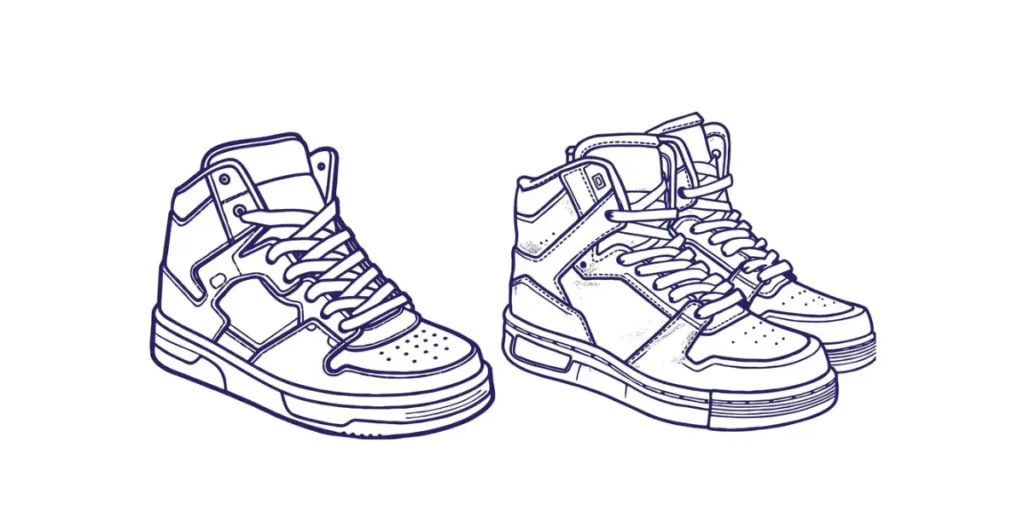
A “sneaker QR Code” typically refers to a QR Code that is associated with a pair of sneakers or athletic shoes.
These QR Codes are often found on or inside the shoe’s packaging, on labels, or even embedded in the design of the shoe itself.
The purpose of a sneaker QR Code can vary, but they are commonly used for the following purposes:
1. Product information
Sneaker QR Codes can provide detailed information about the specific pair of sneakers, such as the model, size, color, materials, and care instructions.
2. Authentication
Some brands use QR Codes to help customers verify the authenticity of their sneakers. By scanning the QR Code, customers can confirm that the product is genuine and not a counterfeit.
3. Marketing and promotions
Sneaker brands may use QR Codes for marketing purposes. Scanning the Code might lead to promotional content, exclusive offers, or access to limited edition releases.
4. User experience
QR Codes can enhance the overall user experience by providing access to multimedia content like videos, augmented reality experiences, or interactive features related to the sneakers.
5. Reordering or additional information
Some sneaker QR Codes enable customers to reorder the same pair of shoes or access additional information about the product, such as customer reviews.
To use a sneaker QR Code, simply scan it with a QR Code scanning app on your smartphone. You can even use a camera-equipped device to access shoe-related information and content.
Keep in mind that the specific functionality of a sneaker QR Code can vary depending on the brand and product. It is essential to follow the provided instructions for the most accurate and up-to-date information.
B. How can you create a QR Code for shoes?

Here’s how you can create QR Code for shoes!
1. Decide on your QR Code category
Depending on what you want your end-users to see, you’d need to select the relevant QR Code category.
For example, if you want to redirect them to your website, you can need to create a Website URL QR Code. Or if you want to give them discount coupons, you can create a Coupon QR Code.
Once you decide on the QR Code category, you can head on to a QR Code generator. In case you haven’t chosen one, here is a detailed comparison chart on the best QR Code generators available online. You can go through it to make a sound decision.
2. Create a QR Code
Using the Scanova QR Code generator for a demo, here is how you can create a QR Code for shoes:
a. Go to Scanova
b. Select the most relevant QR Code category
c. On the page that loads, add the content you want to encode in the QR Code and click Continue.
d. Name the QR Code and click Create QR Code
e. Now, you’ll see the preview of the QR Code on the right. Under it, you’ll see the Edit Design button. If you click on it, you’ll see two design options—Custom Logo Design and Custom Background Design
Custom logo design allows you to add your business’s logo and colors to the QR Code. On the other hand, a custom background design helps you place your QR Code on any image
f. Once you’ve decided on design or no design, click Download. A window will open, prompting you to sign-up for a 14-day free trial. Once you’ve signed up, proceed to download the QR Code
g. Now, you’ll be asked to specify the QR Code image’s format and size
h. Specify these details and click on Export
That’s it. Your QR Code will be downloaded. It is always advisable to test scan the QR Code before putting it to use.
C. Who benefits from using QR Codes on shoes?

Integrating QR Codes into footwear marketing can offer several benefits, these benefits include:
1. Enhanced Customer Engagement: QR Codes can link directly to engaging content such as videos showcasing the features of the footwear, styling tips, or testimonials.
This can deepen the customer’s engagement with the brand and product, potentially leading to increased loyalty and satisfaction.
2. Product Information and Reviews: QR Codes can direct customers to detailed product information, including materials used, manufacturing process, and user reviews.
This transparency can build trust with consumers and help them make informed purchasing decisions.
3. Personalized Experiences: By linking QR Codes to personalized landing pages or surveys, brands can gather valuable data about customers’ preferences, sizes, and shopping habits.
This information can be used to tailor future marketing campaigns and product offerings to better suit their target audience.
4. Cross-Selling and Upselling Opportunities: QR Codes can be used to promote related products or accessories, providing an opportunity for cross-selling and upselling.
For example, a QR Code on a running shoe could lead to a page featuring complimentary socks, insoles, or fitness trackers.
5. Tracking Marketing ROI: QR Codes enable marketers to track the effectiveness of their campaigns more accurately.
By monitoring scan rates and analyzing user behavior after scanning, brands can measure the ROI (Return on investment) of their marketing efforts and adjust strategies accordingly.
6. Interactive Campaigns: QR Codes can be integrated into interactive marketing campaigns such as scavenger hunts, contests, or exclusive access to limited-edition releases.
These campaigns can generate excitement and buzz around the brand while incentivizing customer engagement.
7. Convenience for Retailers and Consumers: QR Codes can streamline the purchasing process by providing easy access to online stores or digital payment options directly from the footwear.
This convenience benefits both retailers, by reducing checkout friction, and consumers, by offering a seamless shopping experience.8. Environmental Sustainability: By leveraging QR Codes for product information and marketing materials, brands can reduce the need for physical packaging and printed materials, contributing to environmental sustainability efforts.
D. When should you use QR Codes on shoes?

QR codes embedded in footwear aren’t just a trend for tech enthusiasts—they’re a versatile tool that benefits various stakeholders across the board:
1. Brands and manufacturers
For footwear brands and manufacturers, QR codes offer a strategic advantage. They enable direct communication with consumers, providing opportunities to share brand stories, highlight product features, and showcase sustainability efforts. This direct engagement helps in building brand loyalty and trust.
2. Retailers
Retailers can leverage QR codes to enhance the in-store shopping experience. By placing QR codes on shoe displays or packaging, retailers can provide shoppers with detailed product information, customer reviews, and even personalized recommendations. This enhances customer satisfaction and boosts sales.
3. Consumers
Perhaps the most crucial beneficiaries are consumers themselves. QR codes empower shoppers with instant access to information. Whether they’re curious about shoe materials, looking for styling tips, or verifying product authenticity, consumers can make informed purchasing decisions conveniently and confidently.
4. Marketing and sales teams
QR codes serve as a powerful marketing tool for promoting new shoe releases or special editions. Marketing teams can create interactive campaigns around QR codes, offering exclusive content or discounts to incentivize purchases and drive engagement.
5. Supply chain and logistics
Beyond the retail environment, QR codes facilitate supply chain management. They can be used to track inventory, monitor shipments, and ensure product authenticity throughout the distribution process. This improves operational efficiency and reduces the risk of counterfeit products entering the market.
E. When to use QR Code for shoes?

QR codes have emerged as a dynamic tool in the footwear industry, offering numerous opportunities to enhance engagement, transparency, and consumer satisfaction.
Here are key scenarios when leveraging QR codes proves most effective:
1. Product launches and marketing campaigns
QR codes are invaluable during product launches and marketing campaigns. They enable brands to create interactive experiences, offering behind-the-scenes content, styling tips, and exclusive previews. This builds anticipation and engages consumers on a deeper level, driving interest and sales.
2. In-store and on-packaging information
Placing QR codes on shoe displays or packaging provides shoppers with instant access to detailed product information. This includes materials used, care instructions, sizing guides, and customer reviews. It enhances the in-store shopping experience by empowering consumers to make informed decisions efficiently.
3. Authenticity verification and anti-counterfeiting
QR codes are an effective tool for combating counterfeit products. By integrating unique identifiers into QR codes, brands can allow consumers to verify product authenticity instantly. This builds trust and reassures customers that they are purchasing genuine, high-quality footwear.
4. Sustainability and ethical practices
Brands committed to sustainability can use QR codes to showcase their eco-friendly initiatives and ethical manufacturing processes. By scanning the code, consumers can learn about the shoe’s environmental impact, recycled materials used, and fair labor practices employed. This transparency aligns with consumer preferences for responsible purchasing choices.
5. Post-purchase engagement and support
QR codes can continue to provide value post-purchase by offering access to customer support, warranty registration, and maintenance tips. This enhances the overall customer experience, fostering loyalty and satisfaction.
When comparing the revenue generated by different countries, the United States leads the market in the Sneakers segment, with an estimated revenue of US$23.4 billion in 2024. Source: Statista
F. How to use QR Codes for shoes effectively?

Here’s a step-by-step guide on how to leverage QR codes effectively:
1. Strategic placement
Determine where to place QR codes on shoes or packaging for maximum impact. Consider visible areas such as shoe tags, packaging labels, or in-store displays where consumers can easily scan them.
2. Content creation
Develop compelling content to embed behind the QR code. This may include:
- Product information: Detailed specifications, materials used, and care instructions.
- Brand story: Share the history of the shoe design, inspiration, and craftsmanship.
- Interactive experiences: Offer virtual try-ons, 360-degree views, or augmented reality features to enhance the shopping experience.
- Exclusive access: Provide behind-the-scenes videos, designer interviews, or sneak peeks of upcoming collections to create excitement and exclusivity.
3. Integration with marketing campaigns
Use QR codes in your marketing campaigns to drive engagement. Promote the QR codes through social media, email newsletters, and in-store signage to encourage scanning and interaction.
4. Authenticity and security
Use QR codes to verify product authenticity and combat counterfeiting. Encode unique identifiers or serial numbers that consumers can scan to ensure they are purchasing genuine products.
5. Track and analyze engagement
Utilize analytics tools to track QR code scans and consumer interactions done through smartphones, or online tools like the QR Code Scanner. This data can provide valuable insights into consumer behavior, preferences, and the effectiveness of your QR code strategy.
6. Update and maintain
Ensure that the content behind the QR codes is regularly updated and relevant. Update information on new product releases, promotions, or changes in manufacturing practices to keep consumers informed and engaged.
Brands that trust us:

G. How does a QR Code for shoes enhance product authentication?

In the fight against counterfeit goods, QR codes have emerged as a powerful tool to ensure product authenticity.
Here’s how they work to protect both brands and consumers:
1. Unique identifiers
Each QR code can be embedded with a unique identifier specific to each pair of shoes. This unique code, when scanned, provides instant verification of authenticity. This ensures that consumers receive genuine products.
2. Secure databases
QR codes are linked to secure, brand-managed databases. When a code is scanned, it cross-references the information with the database, confirming whether the product is genuine. This database can include manufacturing details, distribution paths, and sales records.
3. Tamper-evident features
QR codes can be integrated with tamper-evident labels or packaging. If the QR code or label is altered or removed, it indicates potential tampering, alerting consumers to the possibility of counterfeit products.
4. Instant verification for consumers
By scanning the QR code with their smartphones, consumers can instantly access verification information. This can include the production date, manufacturing location, and even a message confirming the authenticity from the brand. This transparency builds trust and reassures buyers of their purchase.
5. Real-time tracking
Brands can use QR codes to track the journey of each shoe from production to retail. This end-to-end tracking ensures that every step in the supply chain is documented and verified, reducing the risk of counterfeit goods entering the market.
6. Authentication apps
Some brands develop dedicated authentication apps that consumers can download. These apps provide an enhanced experience, including additional verification steps and more detailed product information, further ensuring the product’s legitimacy.
7. Consumer education
Educating consumers on the importance of scanning QR codes for verification helps in creating a more informed customer base. When consumers understand how to verify product authenticity, they become proactive participants in the fight against counterfeiting.
H. Future trends

QR codes have already revolutionized how consumers interact with footwear, and their future potential is even more exciting. Here are the key trends to watch:
1. Personalized shopping experiences
The future of QR codes lies in personalization. By scanning a QR code, consumers could receive tailored recommendations based on their purchase history and preferences. This could include personalized styling tips, complementary product suggestions, and exclusive discounts.
2. Augmented reality (AR) integration
Imagine scanning a QR code and seeing how a pair of shoes would look on you without trying them on. AR integration with QR codes will provide virtual try-on experiences, allowing customers to visualize products realistically and interactively before making a purchase.
3. Blockchain for enhanced security
Integrating blockchain technology with QR codes will take product authentication to the next level. Blockchain provides an immutable record of each product’s journey from manufacturer to consumer, ensuring the highest level of security and transparency.
4. Interactive storytelling
Brands will use QR codes to create immersive storytelling experiences. Consumers can scan a code to unlock videos, interviews with designers, and behind-the-scenes looks at the creation process. This deeper connection with the brand’s narrative will enhance customer loyalty and engagement.
5. Sustainability tracking
As consumers become more eco-conscious, QR codes will provide detailed information on a shoe’s environmental impact. This includes data on sustainable materials, carbon footprint, and recycling instructions. Transparency in sustainability practices will be a key differentiator for brands.
6. Real-time feedback and reviews
QR codes will facilitate real-time feedback and reviews from consumers. After purchasing, customers can scan the QR code to leave instant reviews or participate in surveys, providing brands with valuable insights and fostering a sense of community.
7. Enhanced loyalty programs
QR codes will be integrated into loyalty programs, offering customers rewards for scanning codes on multiple purchases or participating in brand activities. This gamification approach will incentivize repeat business and deepen customer relationships.
8. Seamless omnichannel integration
The future of retail is omnichannel, and QR codes will play a crucial role in bridging online and offline experiences. In-store shoppers can scan QR codes to access online inventory, while online shoppers can use QR codes to find the nearest physical store stocking the product.
9. AI-powered insights
Artificial intelligence will enhance the capabilities of QR codes by analyzing scan data to provide brands with detailed consumer insights. This data will help refine marketing strategies, optimize inventory, and predict trends.
In 2020, sneaker sales fell by 9.8% due to the pandemic, marking the only decline in global sneaker revenue over the past five years. Source: RunRepeat
I. Real-world examples of shoe brands using QR Codes
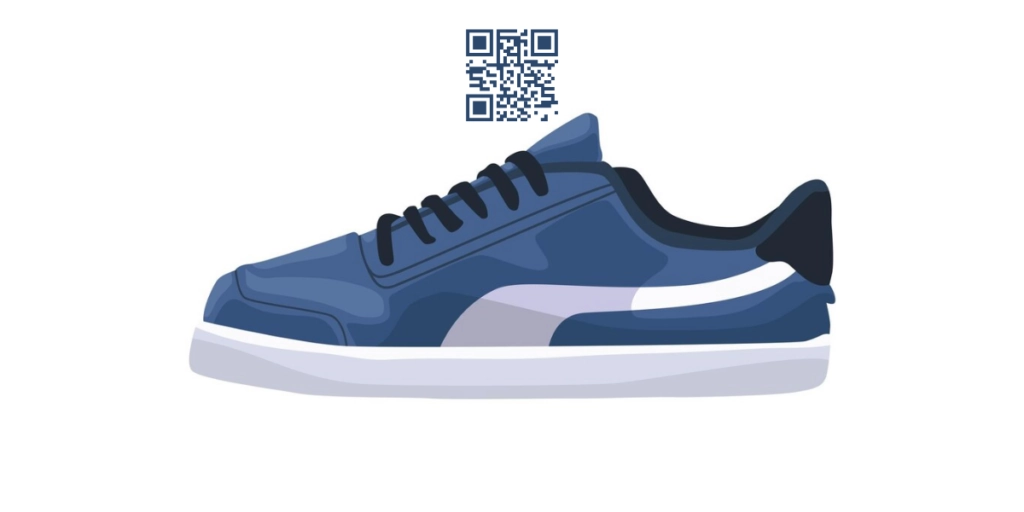
1. Nike
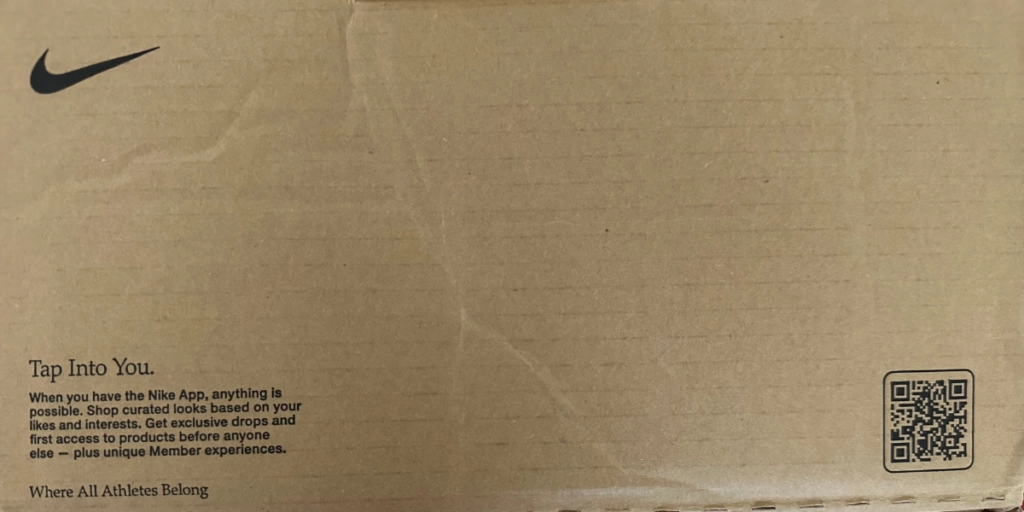
Nike incorporates QR Codes into product tags, in-store displays, and shoe packaging. By scanning these codes, customers can access product details, care instructions, and exclusive marketing campaigns.
For example, the Nike Air Max series frequently connects consumers to the Nike app for customization and employs QR Codes to unlock behind-the-scenes movies about the design process.
2. Adidas
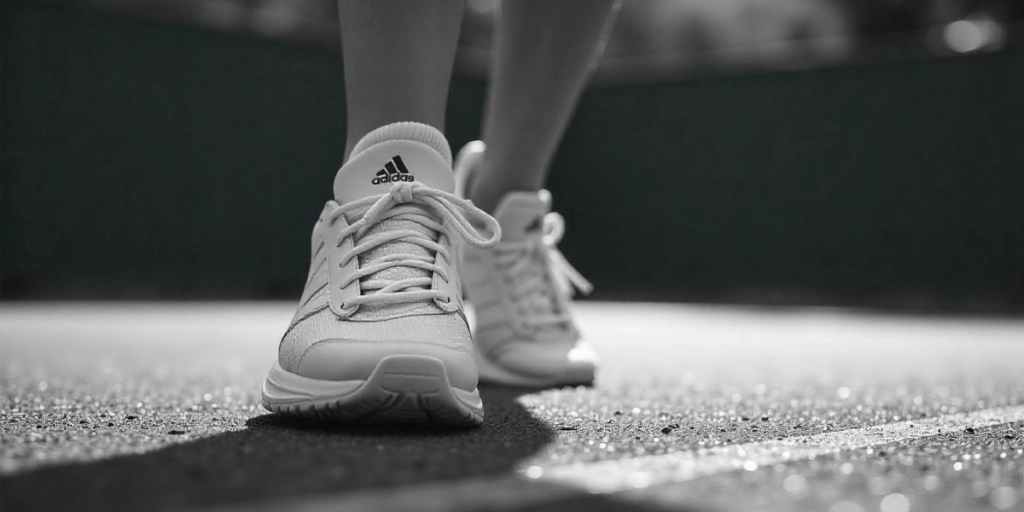
Adidas uses QR Codes to encourage openness and sustainability.
Customers may track the shoe’s production history, including the materials used and carbon footprint information, by scanning the QR Codes on the tags of many of their eco-friendly product lines.
Additionally, these codes connect to recycling or trade-in programs for used Adidas clothing.
Adidas added QR Codes to their Pulseboost HD shoes, linking each scan to a Spotify playlist based on your location, like country in Nashville or pop in L.A. It’s a creative way to boost engagement beyond just linking to websites. Source: loyalty360
3. Puma
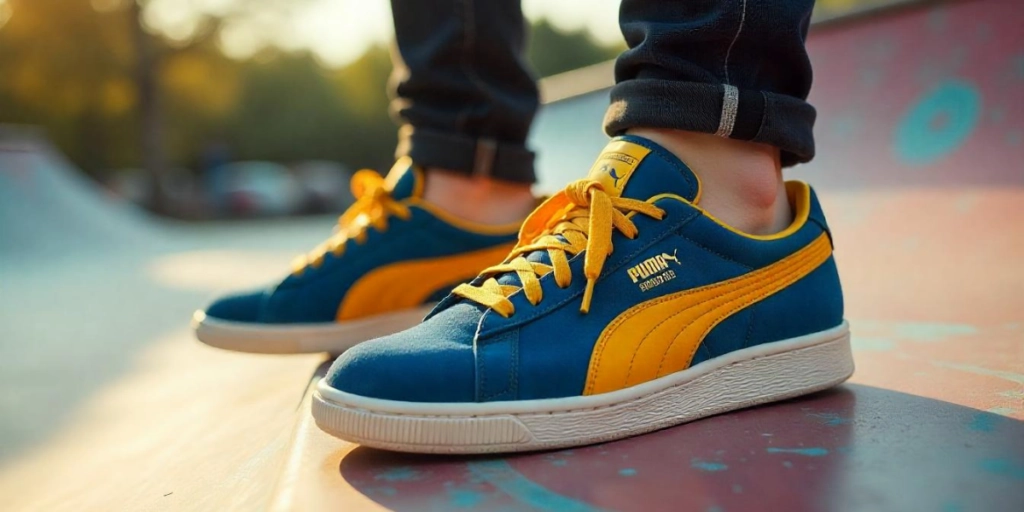
To run interactive marketing initiatives, Puma has adopted QR Codes.
For instance, QR Codes on in-store posters before a product launch directed customers to virtual try-ons, augmented reality experiences, and temporary sales.
This strategy maintains the brand’s connection with younger, tech-savvy consumers.
4. Reebok
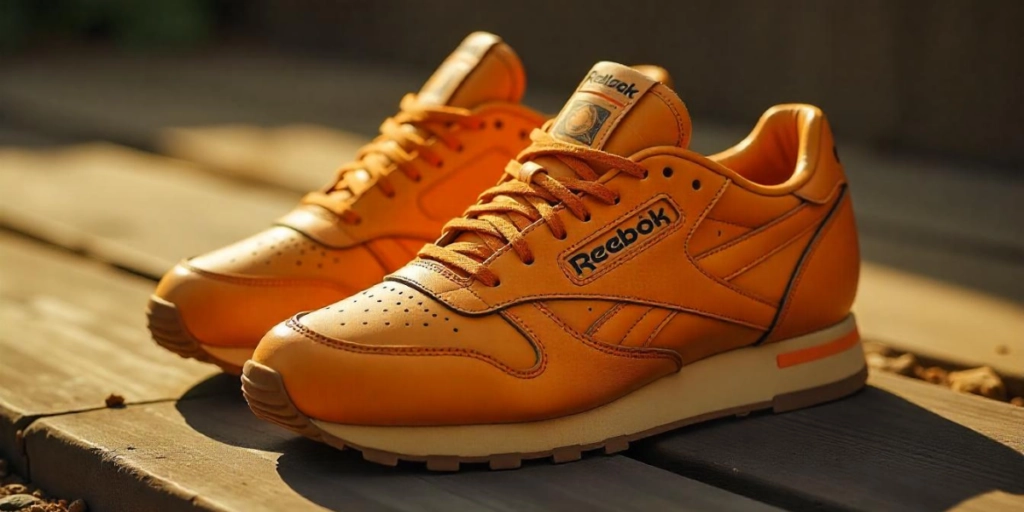
Reebok’s training shoes often include QR Codes that provide workout guides and exercise tips when scanned.
For example, codes on their CrossFit shoes redirect users to curated training programs, giving buyers added value beyond the product.
5. Allbirds

Sustainability-focused brand Allbirds prints QR Codes on their packaging and in their stores. These codes detail the carbon footprint of each shoe, educating customers on their environmental impact.
Additionally, they link to in-depth guides about the company’s sustainable practices and materials.
6. Vans
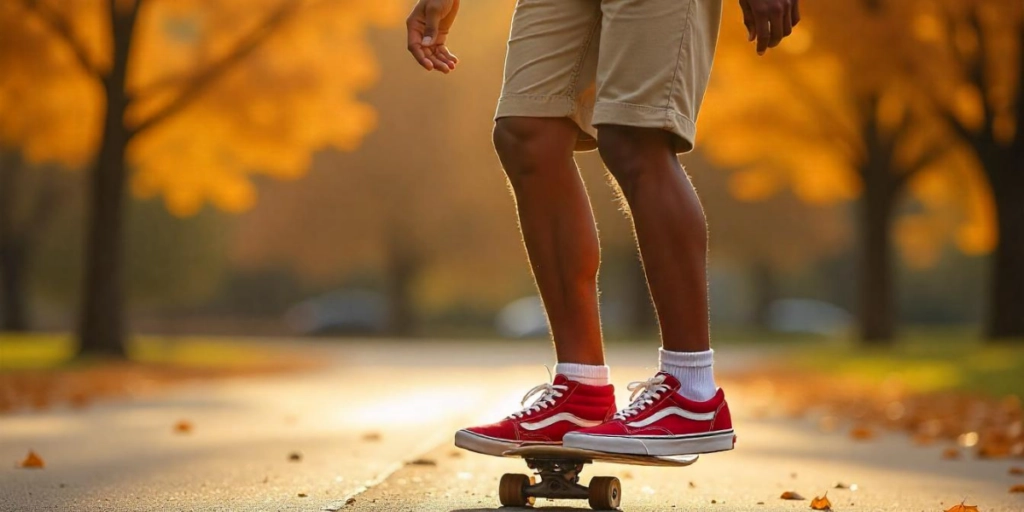
Vans introduced QR Codes for limited-edition shoes as part of their customization services. Customers can scan the QR Code on a shoe tag to access an online design platform where they can modify colors, patterns, and more, making their Vans unique.
7. Asics

Asics incorporates QR Codes in its running shoe lines to enhance the customer experience. Scanning a code provides access to gait analysis tools, training recommendations, and information on upcoming Asics-sponsored marathons and running events.
In 2019, New Balance added QR Codes and blockchain tech to limited basketball shoes, letting buyers verify authenticity through a chip-embedded “Real Chain” card. This secured proof of ownership and curbed counterfeits. Source: voguebusiness
J. Best practices

Creating effective QR Code for shoes involves following some best practices to ensure they serve their intended purpose and provide value to your customers.
Here are some best practices for using QR Codes in the context of shoes:
1. Provide valuable information
The content linked to the QR Code should be relevant and valuable to the customer. This can include product details, sizing information, reviews, and anything that helps customers make an informed decision.
2. Mobile optimization
Ensure that the content linked to the QR Code is mobile-friendly. Most people will be scanning the Code with their smartphones, so the linked webpage or information should be easy to navigate on mobile devices.
3. Clear call to action
Clearly instruct users on what to expect when they scan the QR Code. For example, you could include a label such as “Scan for Product Details” or “Scan to Buy Now.”
4. Branding and design
Consider incorporating your brand’s logo or design elements into the QR Code, making it visually appealing. However, don’t compromise the scannability of the Code by making it too complex.
5. Correct sizing
Ensure that the QR Code is of an appropriate size for easy scanning. It should be large enough to scan but not so large that it looks cluttered on packaging or marketing materials.
6. Test scannability
Test the QR Code with different mobile devices and QR Code reader apps to ensure it works smoothly. Avoid generating QR Codes with low error correction levels that might be difficult to scan.
7. Keep content updated
If the linked content changes, make sure to update the QR Code accordingly. Broken or outdated links can frustrate users.
8. Privacy considerations
Be transparent about data collection if the QR Code links to a page that requests personal information. Ensure compliance with privacy regulations.
9. Use short URLs
If you’re linking to a webpage, consider using a shortened URL to keep the QR Code simple and minimize the data it needs to store.
10. Promote QR Codes
Include information near the QR Code to inform users about its purpose. For example, “Scan here for shoe details” or “Use your phone to learn more.”
11. Tracking and analytics
Implement QR Code tracking and analytics tools to measure engagement and gather insights about how users interact with the QR Codes.
12. Educate your team
Ensure that your sales and marketing teams understand how to use and promote QR Codes effectively to customers.
13. A/B testing
If applicable, consider A/B testing different QR Code campaigns to determine what works best for your specific audience.
14. Security
Be cautious about linking to external websites and ensure that the linked content is secure and trustworthy.
What our customers think about us:

K. FAQs

1. What is a QR Code for shoes?
A QR Code for shoes is a two-dimensional barcode that contains information about a specific pair of shoes. It can link to various details such as product information, pricing, reviews, or even a brand’s website.
2. How do I scan a QR Code on shoes?
To scan a QR Code on shoes, you’ll need a smartphone or a tablet with a camera. Open your device’s camera app and point it at the QR Code. You should see a notification or a link to open the associated information.
3. What information can a QR Code on shoes provide?
The information contained in a QR Code can vary. It might link to a product page, provide product details, show reviews, or offer exclusive discounts and promotions related to the shoes.
4. Why do some shoes have QR Codes?
QR Codes on shoes can serve several purposes. They can be used for marketing, providing product information, confirming authenticity, or offering access to special content or promotions.
5. Are QR Codes on shoes secure?
QR Codes themselves aren’t inherently secure, but they can be used in conjunction with secure systems. Brands and retailers can implement security features to ensure that scanned QR Codes do not lead to fraudulent websites or content.
6. Can I make my own QR Code for shoes?
Yes, you can create your own QR Code for shoes using Scanova. You can encode information like a link to a website, product details, or contact information.
7. How can I verify the authenticity of shoes using a QR Code?
Some shoe brands use QR Codes to allow customers to verify the authenticity of their products. By scanning the code, you can confirm that the product is genuine and not a counterfeit.
8. Do all shoe brands use QR Codes?
No, not all shoe brands use QR Codes. Their use depends on the marketing and branding strategies of individual companies. Some brands use them for various purposes, while others do not.
9. Are QR Codes on shoes only for marketing?
While marketing is a common use of QR Codes on shoes, they can serve other purposes, such as providing product details, enhancing the user experience, and helping with product authenticity verification.
10. Can I use a QR Code to reorder the same pair of shoes?
Some brands offer QR Code functionality to reorder the same pair of shoes easily. By scanning the Code, you can be directed to a page where you can repurchase the product or find similar options.
11. Do QR Codes on shoes require an internet connection to work?
Yes, most QR Codes on shoes are designed to link to online content. To access the information linked to the QR Code, you will need an internet connection.
12. What do I do if the QR Code on my shoes is damaged or doesn’t work?
If the QR Code is damaged or not working, you can try to manually type in the URL or information provided with the shoes, or contact the manufacturer or retailer for assistance.
That is all you need to know about how a QR Code can be used in the shoes industry. You can now create your own QR Code to make your shoe business better and offer your customers a hassle-free experience.
13. What features can customers access with a QR Code Nike shoes provide?
Nike shoes have QR Codes that allow customers to access several functions.
These codes can be scanned to reveal comprehensive product details, including materials, size charts, and maintenance guidelines.
They might also be able to access unique information, such as behind-the-scenes films of the shoe’s design process, exclusive deals, or temporary discounts.
Additionally, QR Codes frequently direct users to the Nike app, where they can track orders, customize products, and participate in reward programs.
Some codes even allow augmented reality (AR) experiences, including virtual try-ons or interactive narrative campaigns, for tech-savvy customers.
14. What happens when you scan QR Code shoes to access product details or exclusive offers?
When you scan QR Code shoes, you can instantly access various features to enhance your shopping and ownership experience.
These codes often provide detailed product information, including material specifications, sizing guides, and care instructions.
They may also unlock exclusive offers, such as discounts, limited-time promotions, or early access to new collections.
Additionally, scanning can lead to personalized experiences like augmented reality try-ons, interactive design tools, or content showcasing the shoe’s design and development process.
For loyal customers, these codes can connect to brand apps, offering rewards, purchase tracking, and membership benefits.
Summing Up
So next time you lace up your favorite pair of shoes, take a moment to scan that QR code. You might just unlock a world of possibilities right at your fingertips.
Ready to explore the potential of QR codes for your shoe brand? Start integrating these dynamic tools today and watch as they elevate your customer engagement, streamline operations, and pave the way for a brighter, more connected future.
Here’s to stepping forward with technology that not only meets but exceeds the expectations of modern shoppers. Happy scanning!
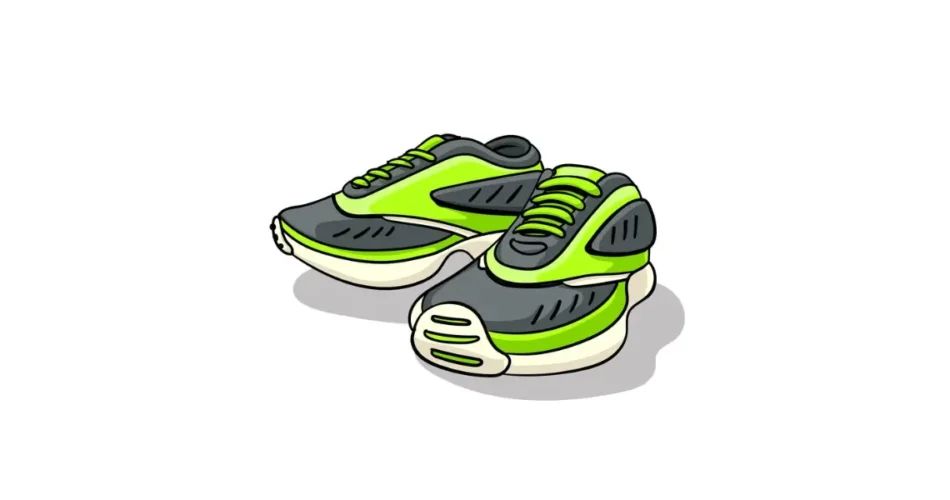


I will check by my shoes